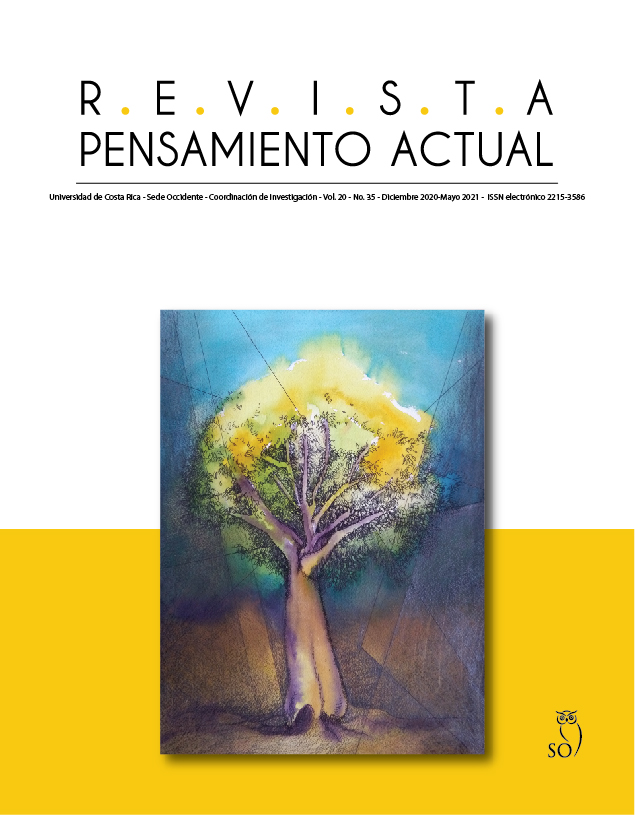Resumen
El largometraje Imágina (2010), de Adrián Cordero y Roberto Peralta, ejemplifica una operación de escritura transmediática que ha sido poco explorada por los creadores costarricenses: esa que traslada las formas y los contenidos de un espectáculo de danza, concebido para la escena, a una entidad audiovisual cuyas temporalidad y espacialidad son pensadas para la pantalla. El videodanza de Cordero y Peralta “transpone” tres coreografías de Rogelio López: Prohibido adentrarse en el bosque, Cuerpos de la barra y Homenaje a María Cristina (2007-2010). Esta operación de transposición contó con la participación del mismo coreógrafo, así como de las bailarinas y bailarines del grupo Danza abierta, quienes hicieron parte de la versión escénica de las creaciones. Con el texto audiovisual como punto de partida, este artículo examina la escritura transmediática que lo hizo posible; es decir, una operación de transposición constituida por el encuentro y diálogo de dos medios artísticos con sus materiales, códigos, convenciones y potencialidades particulares. El examen llama la atención sobre los intercambios y las tensiones que emergen de la concurrencia de profesionales de dos disciplinas distintas. Se reconoce finalmente en Imágina la productividad de esta diferencia mediática y disciplinar.
Citas
Bordwell, D. y Thompson, K., 1995. El arte cinematográfico. Una introducción. Barcelona: Paidós.
Bolter, J. y Grusin, R, 1999. Remediation. Understanding New Media.
Massachusetts: MIT Press.
Cubillo, R., 2013. “La intermedialidad en el siglo XXI”, Diálogos, 14 (2), p. 169-179.
Gaudreault, A., 1999. Du littéraire au filmique. Paris: Armand Colin/Nota Bene.
McLuhan, M., 1994. Understanding Media. The Extensions of Man. Massachussets: MIT Press.
Müller, J., 2006. “Vers l’intermédialité. Histoires, positions et options d’un axe de
pertinence”, Médiamorphoses, 16, p. 99-110.
Rajewsky, I., 2006. “Intermediality, Intertextuality, and Remediation: A Literary Perspective on Intermediality”, Intermédialités, 6, p. 43-64.
Salas Murillo, B., 2018. “La intermedialidad: las oportunidades y los riesgos de un concepto en boga”, Estudios, número especial (julio), p. 60-76.
Vanoye, F., 1996. Guiones modelo y modelos de guión. Barcelona: Paidós.
Villeneuve, J., 2000. “L’ordinateur de Chris Marker. Mélancolie et intermédialité”, Protée, 28 (3), p. 7-12.
Villeneuve, J., 2010. “La disposition intermédiale: théorie et pratique: entretien avec Johanne Villeneuve (professeur au département d’Études littéraires de l’UQAM)”, Spirale, (231), pp. 38-41.
Videografía Cordero, A. y Peralta, R. (dirección y producción.) (2011). Imágina. San José: Nebulosa producciones.
López, R. (2009). Prohibido adentrarse en el bosque. Grabación del Sistema
Universitario de Televisión UCR, en el Teatro Montes de Oca, 23 de mayo
López, R. (2008). Cuerpos de la barra. Grabación del Sistema Universitario de Televisión UCR, en Teatro Melico Salazar, sin fecha.

